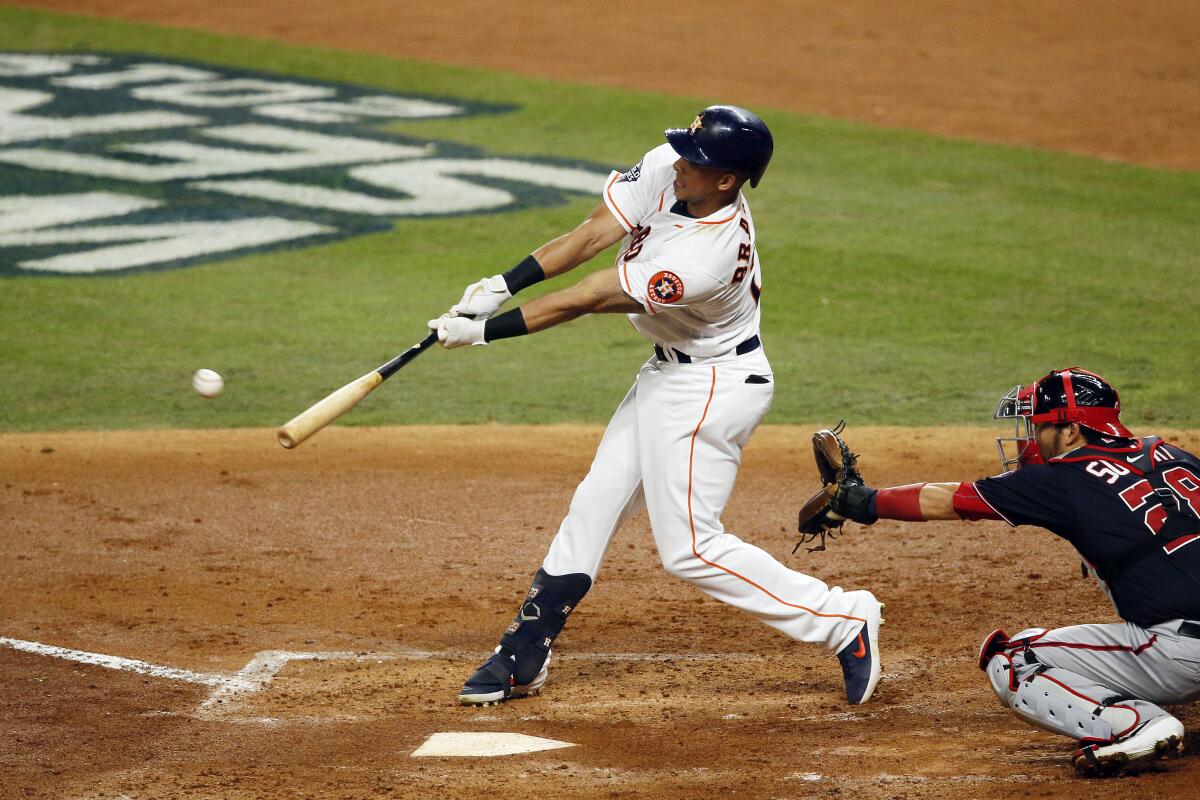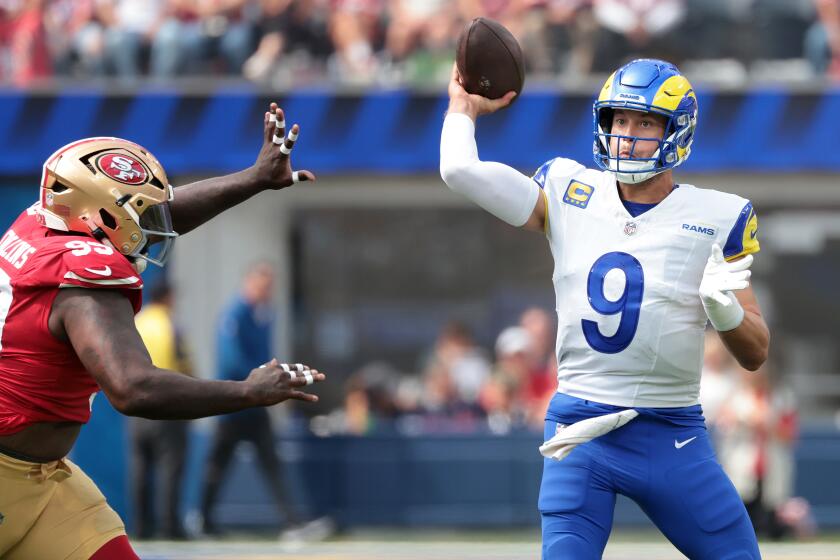MLB Commissioner Manfred says the ball isn’t different during the playoffs

- Share via
HOUSTON — All regular season long, Major League Baseball faced questions about the baseballs used because they were flying farther than ever. The evidence was there. More home runs were hit than ever before and studies illustrated details supporting claims that the balls were behaving differently. In June, MLB acknowledged the balls were different, claiming the reason was that the pill in the middle wasn’t perfectly centered. It became a storyline the league wanted to swat away.
Then, suddenly, the baseballs seemed to have changed, without explanation, once the calendar flipped to October. Balls barreled this postseason seemingly aren’t traveling as far as they would have during the regular season. Sure home runs the previous six months became routine fly balls. Anecdotal evidence is prevalent, but balls hit with the same launch angle and exit velocity are not going as far as the regular season. Players, officials, and observers have assumed the balls were deadened.
On Wednesday, before Game 2 of the World Series, Rob Manfred maintained that the sample size is too small and unreliable. He noted cold weather suppresses a ball’s flight and the pitching is better in playoff games. He emphasized the balls are not different than the ones used during the regular season.
“I can tell you one thing for absolute certain, just like every other year, the balls that were used in this postseason were selected from lots that were used during the regular season,” Manfred said. “There was no difference in those baseballs.”
Washington Nationals outfielder Juan Soto hit a home run off Houston Astros pitcher Gerrit Cole in Game 1 of the World Series that has to be seen to be believed.
MLBPA director Tony Clark countered Manfred’s viewpoint. He said players have maintained the balls have “changed quite a bit.” He said conversations with the league about the matter are “ongoing and will continue.” He said players want consistency.
“It should just be a baseball and it should be a baseball that they can expect to do what it’s always done,” Clark said. “So I’d like to get to a point … as I’m sure players would, where they know what they’re picking up, they know how it’s going to play. As much as it’s been a concern this year, we hope it’s not a concern moving forward and we get the consistency that we did in the past.”
All MLB baseballs are produced in Costa Rica at a Rawlings plant the league has controlled since buying the company in June 2018. Clark said MLBPA officials are willing to visit the plant to ensure qualifications are met; he said MLBPA officials did that before MLB took ownership. But he emphasized a ball’s characteristics can change after manufacturing.
“The custodianship from the time it leaves to the time it arrives at a ballpark, to how long it sits, to where it’s stored, to what balls are used at what point in time, all of that is worthy of discussion,” Clark said.
Manfred said the league’s investigation into the baseballs will conclude some time after the World Series and before the end of the year. That should give the league ample time to rectify the inconsistencies before the start of next season -- even if officials claim there aren’t any to rectify.
More to Read
Go beyond the scoreboard
Get the latest on L.A.'s teams in the daily Sports Report newsletter.
You may occasionally receive promotional content from the Los Angeles Times.












